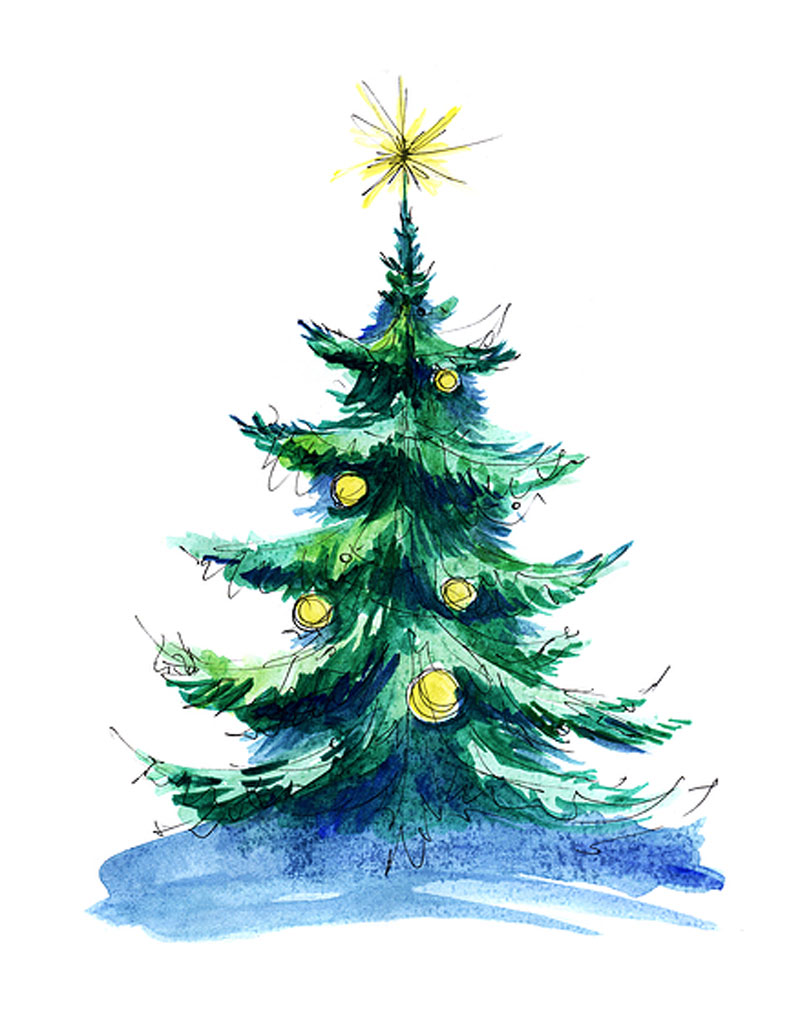Local history: Christmas past
23rd December 2020
As we prepare to celebrate a festive season like no other in modern times, Caroline Aston takes a glimpse back in time at Christmas past traditions and Queen Victoria’s links with three local noble families

The phrase a ‘Victorian Christmas’ evokes instant images – pine trees ablaze with candles, bonneted beauties kissing beneath mistletoe boughs, cherry-cheeked children building snowmen, and pantomimes, puddings and pies! Queen Victoria’s long reign gave us many of these traditional ingredients of our Christmas today, and some of her closest confidantes and friends were drawn from Rutland, Leicestershire and Northamptonshire.
Burghley House
The Queen visited Stamford’s Burghley House in November 1844, nine years after her first stay there as Princess Victoria of Kent (when she had confided to her diary that the Exeter children were plain). The Marquess of Exeter, later Groom of the Stole to Prince Albert, had planned some splendid amusements for the royal visitors – fireworks, dancing, tree plantings and even a command performance by Lord Exeter’s cows, which were paraded on the lawns for inspection! A good time was had by all, the perfect aperitif to the royal Christmas that followed a month later.
Prince Albert had already popularised the Christmas tree, Dickens published ‘A Christmas Carol’ in 1843, and the first Christmas card had appeared the same year, though it would be two years before Mr Tom Smith gave us crackers. At Windsor or Burghley, vast quantities of festive fare would be in production – cannonball-shaped puddings ready to be boiled on the great day, harpooned with holly and flamed with brandy, and stone jars of rich mincemeat often including rare roast beef in the recipe! Our great houses hoped for sharp frosts and snow – sledging and skating on frozen lakes and rivers was great fun. Just three months after her Burghley visit the Queen was at Brighton’s Royal Pavilion, when there was heavy snowfall. She immediately sent for her sleigh and two ponies, Keith and Kintore, who were harnessed in red leather a ‘jingle with golden bells’, and Albert took her for an invigorating ride along the London road! That royal sleigh still exists, upholstered in scarlet velvet and sporting a golden socket to hold a plume of ostrich feathers!
Boughton House
Daisy Goodwin’s ‘Victoria’ series starred the late, great Diana Rigg as the Duchess of Buccleuch. Charlotte Anne Montagu Douglas Scott, Duchess of Queensberry and Buccleuch, was the chatelaine of Boughton House near Kettering and served as Mistress of the Robes to Victoria from 1841–6. The choice of Dame Diana to play her was controversial, as the Duchess was 30 in 1841, while the actress was 80! The Queen liked Charlotte, describing her as ‘an agreeable, sensible, clever little person’ who had four children. One of them was a daughter named Victoria, who was the Queen’s godchild, baptised at Buckingham Palace in 1845. This second Victoria, just like her royal godmother, went on to have nine children!
The Duchess would doubtless have discussed the perennial problem of Christmas presents with the Queen, who was most generous in her choice of gifts for her own children, who had individual tables of presents each year. Charlotte’s children would have opened their gifts on 25 December, but the Royal Family chose Christmas Eve, a German tradition called ‘Bescherung’. The ducal family would not have stinted – jewellery, automaton toys, books, pictures and dolls in profusion – but the Queen and Albert bestowed huge quantities of statues, fine jewels and portraits to name but a few things on their lists. One of the most charming pieces in the Royal Collection is Albert’s first ever love offering, a delicate gold bracelet engraved with hearts and lovers’ knots, engraved ‘From Albert, Dec. 24th 1839’, while a year later the Queen gave him her portrait by John Partridge: she is shown wearing that bracelet along with other pieces given to her by the Prince during the first, passionate year of their marriage.
Exton Park
Exton Park near Oakham is home to the Earls of Gainsborough, who have close connections to Queen Victoria. Charles Noel, the second Earl (1818–81), was married to one of her 12 bridesmaids, the former Lady Ida Hay. Ida’s mother-in-law Frances, the previous Countess of Gainsborough, had become Lady of the Bedchamber to the Queen on Victoria’s accession in 1837. However, Frances had originally been dubious about accepting the post: she was extremely religious and disapproved of the theatre – something the Queen loved. Aged 14, Victoria had gone to Drury Lane Theatre to see a grand Christmas spectacular starring a ‘fiery, flapping and biting dragon’! Lady Gainsborough overcame her moral principles but probably preferred the private royal shows at Windsor between 1848–61 rather more. The Queen’s favourites were ‘tableaux vivants’, actors posing in costume with props, scenery and musical accompaniment. Having nine children came in very handy here, as Her Majesty had personally produced an entire cast list! Victoria once wrote: ‘The Band played “Home Sweet Home”. This brought to a close what were lovely Tableaux & a great treat.’ And that is what any Christmas should be, especially this one, which we all hope will shine light and hope into the days that lie ahead.




